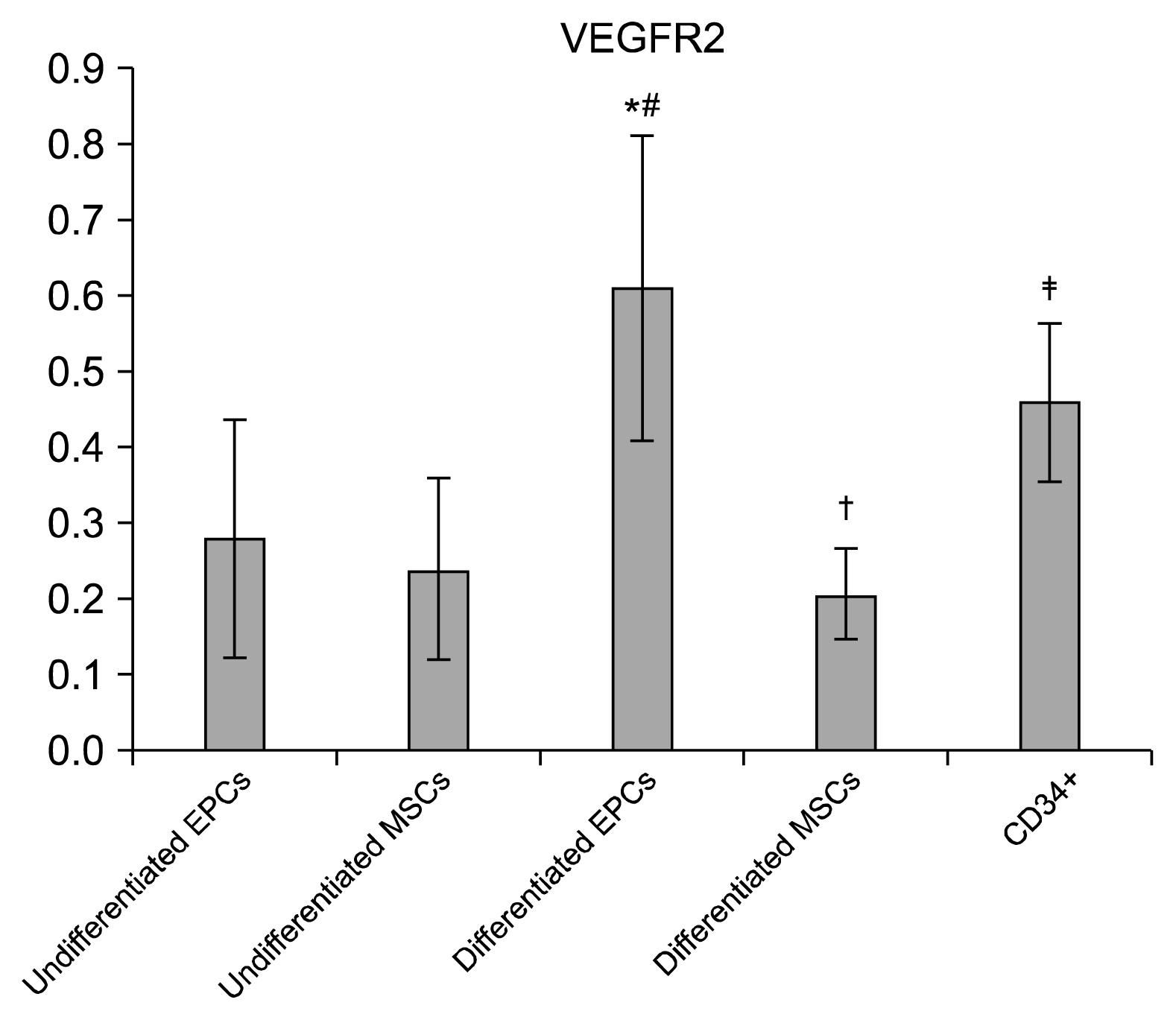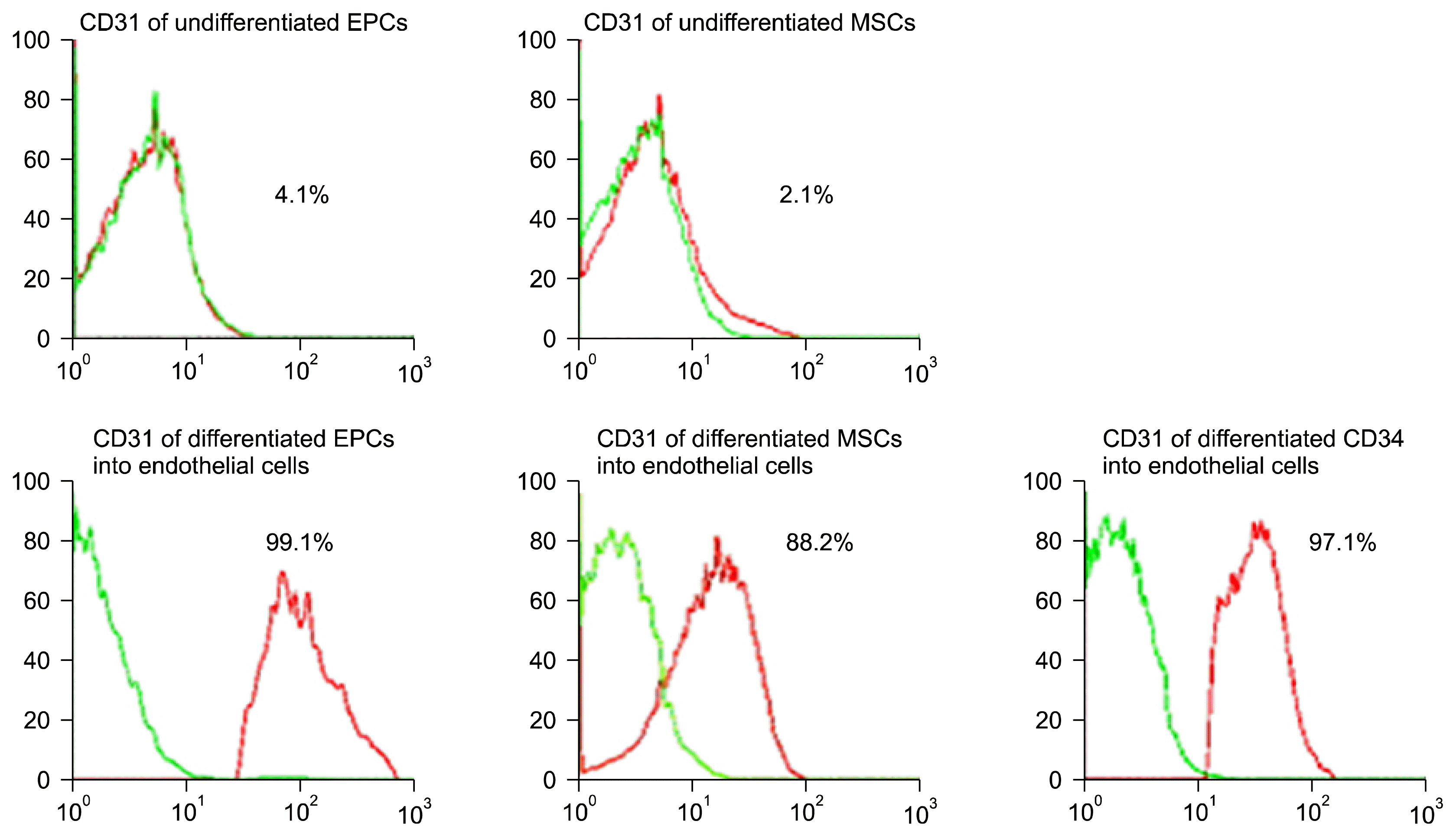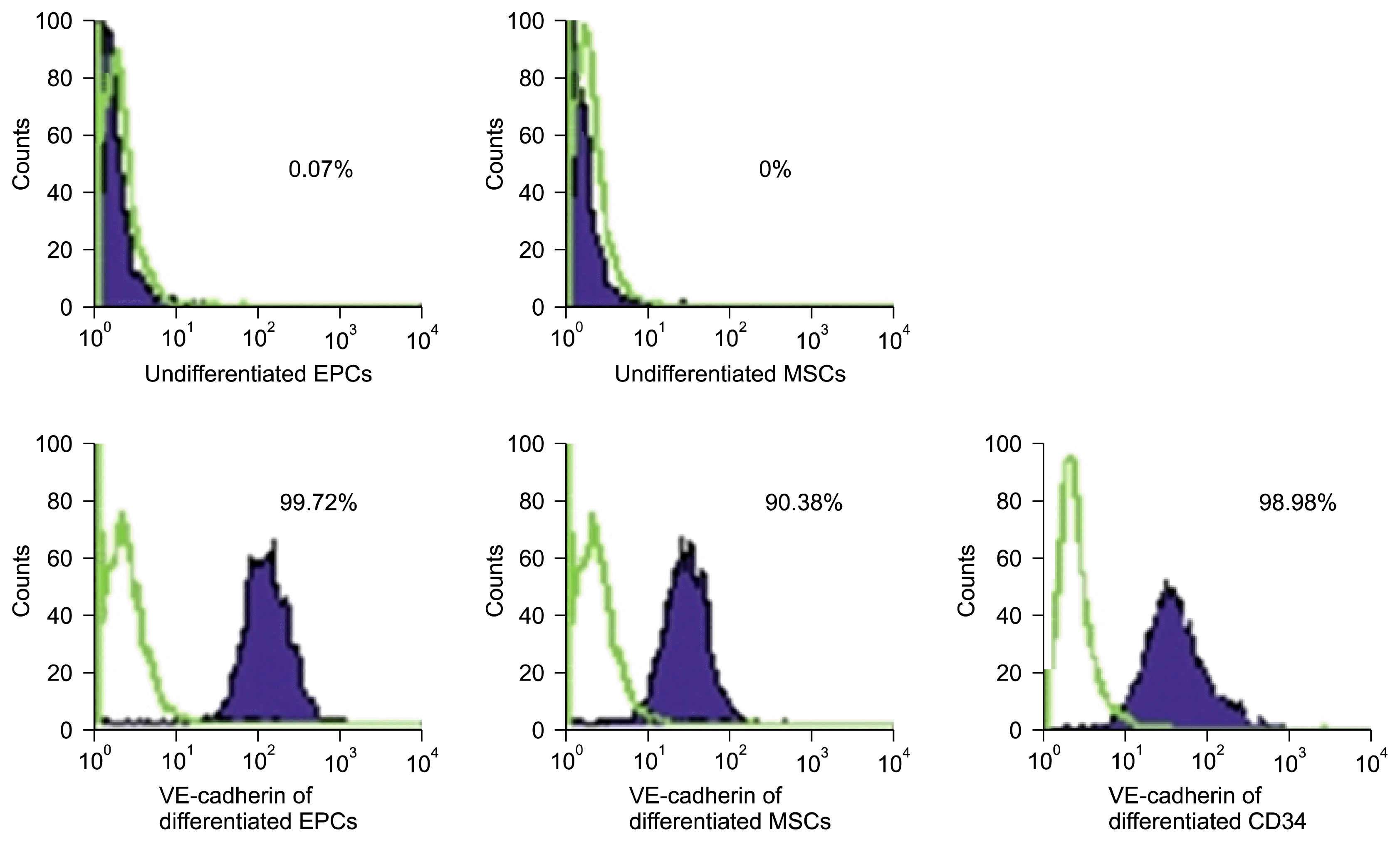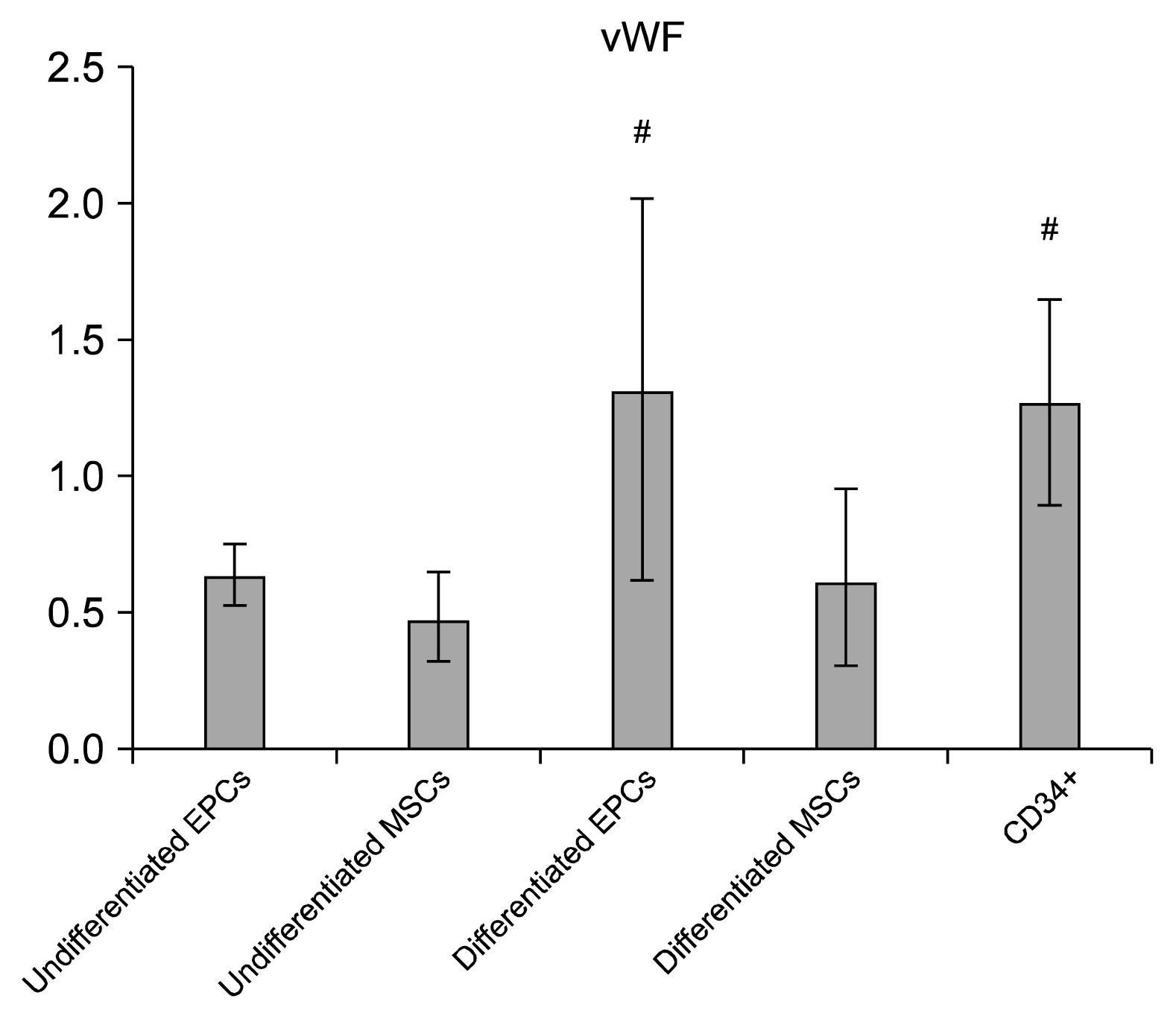1. Marti HJ, Bernaudin M, Bellail A, Schoch H, Euler M, Petit E, Risau W. Hypoxia-induced vascular endothelial growth factor expression precedes neovascularization after cerebral ischemia. Am J Pathol. 2000; 156:965–976. DOI:
10.1016/S0002-9440(10)64964-4. PMID:
10702412. PMCID:
1876841.

2. Li Y, Zhang D, Zhang Y, He G, Zhang F. Augmentation of neovascularization in murine hindlimb ischemia by combined therapy with simvastatin and bone marrow-derived mesenchymal stem cells transplantation. J Biomed Sci. 2010; 17:75. DOI:
10.1186/1423-0127-17-75. PMID:
20846454. PMCID:
2946286.

3. Ho TK, Shiwen X, Abraham D, Tsui J, Baker D. Stromal-cell-derived factor-1 (SDF-1)/CXCL12 as potential target of therapeutic angiogenesis in critical leg ischaemia. Cardiol Res Pract. 2012; 2012:143209. PMID:
22462026. PMCID:
3296148.

4. Liman TG, Endres M. New vessels after stroke: postischemic neovascularization and regeneration. Cerebrovasc Dis. 2012; 33:492–499. DOI:
10.1159/000337155. PMID:
22517438.

5. Aviles RJ, Annex BH, Lederman RJ. Testing clinical therapeutic angiogenesis using basic fibroblast growth factor (FGF-2). Br J Pharmacol. 2003; 140:637–646. DOI:
10.1038/sj.bjp.0705493. PMID:
14534147. PMCID:
1350957.

6. Awata T, Inoue K, Kurihara S, Ohkubo T, Watanabe M, Inukai K, Inoue I, Katayama S. A common polymorphism in the 5′-untranslated region of the VEGF gene is associated with diabetic retinopathy in type 2 diabetes. Diabetes. 2002; 51:1635–1639. DOI:
10.2337/diabetes.51.5.1635. PMID:
11978667.

7. Harris VK, Coticchia CM, Kagan BL, Ahmad S, Wellstein A, Riegel AT. Induction of the angiogenic modulator fibroblast growth factor-binding protein by epidermal growth factor is mediated through both MEK/ERK and p38 signal transduction pathways. J Biol Chem. 2000; 275:10802–10811. DOI:
10.1074/jbc.275.15.10802.

8. Schultz GS, Grant MB. Neovascular growth factors. Eye (Lond). 1991; 5:170–180. DOI:
10.1038/eye.1991.31.

9. Strasly M, Doronzo G, Cappello P, Valdembri D, Arese M, Mitola S, Moore P, Alessandri G, Giovarelli M, Bussolino F. CCL16 activates an angiogenic program in vascular endothelial cells. Blood. 2004; 103:40–49. DOI:
10.1182/blood-2003-05-1387.

10. Sameermahmood Z, Balasubramanyam M, Saravanan T, Rema M. Curcumin modulates SDF-1alpha/CXCR4-induced migration of human retinal endothelial cells (HRECs). Invest Ophthalmol Vis Sci. 2008; 49:3305–3311. DOI:
10.1167/iovs.07-0456. PMID:
18660423.

11. Weiss ML, Medicetty S, Bledsoe AR, Rachakatla RS, Choi M, Merchav S, Luo Y, Rao MS, Velagaleti G, Troyer D. Human umbilical cord matrix stem cells: preliminary characterization and effect of transplantation in a rodent model of Parkinson’s disease. Stem Cells. 2006; 24:781–792. DOI:
10.1634/stemcells.2005-0330.

12. Volpe G, Santodirocco M, Di Mauro L, Miscio G, Boscia FM, Muto B, Volpe N. Four phases of checks for exclusion of umbilical cord blood donors. Blood Transfus. 2011; 9:286–291. PMID:
21627927. PMCID:
3136596.
13. Matsuo Y, Imanishi T, Hayashi Y, Tomobuchi Y, Kubo T, Hano T, Akasaka T. The effect of endothelial progenitor cells on the development of collateral formation in patients with coronary artery disease. Intern Med. 2008; 47:127–134. DOI:
10.2169/internalmedicine.47.0284. PMID:
18239320.

14. Anzalone R, Corrao S, Lo Iacono M, Loria T, Corsello T, Cappello F, Di Stefano A, Giannuzzi P, Zummo G, Farina F, La Rocca G. Isolation and characterization of CD276+/HLA-E+ human subendocardial mesenchymal stem cells from chronic heart failure patients: analysis of differentiative potential and immunomodulatory markers expression. Stem Cells Dev. 2013; 22:1–17. DOI:
10.1089/scd.2012.0402.

15. Goerke SM, Kiefer LS, Stark GB, Simunovic F, Finkenzeller G. miR-126 modulates angiogenic growth parameters of peripheral blood endothelial progenitor cells. Biol Chem. 2015; 396:245–252. DOI:
10.1515/hsz-2014-0259.

16. Abd El Aziz MT, Abd El Nabi EA, Abd El Hamid M, Sabry D, Atta HM, Rahed LA, Shamaa A, Mahfouz S, Taha FM, Elrefaay S, Gharib DM, Elsetohy KA. Endothelial progenitor cells regenerate infracted myocardium with neovascularisation development. J Adv Res. 2015; 6:133–144. DOI:
10.1016/j.jare.2013.12.006. PMID:
25750747. PMCID:
4348451.

17. Fons P, Gueguen-Dorbes G, Herault JP, Geronimi F, Tuyaret J, Frédérique D, Schaeffer P, Volle-Challier C, Herbert JM, Bono F. Tumor vasculature is regulated by FGF/FGFR signaling-mediated angiogenesis and bone marrow-derived cell recruitment: this mechanism is inhibited by SSR128129E, the first allosteric antagonist of FGFRs. J Cell Physiol. 2015; 230:43–51. DOI:
10.1002/jcp.24656.

18. Zhang C, Li Y, Wang J, Li K. The Supernatant Obtained from Cultured Anip973 Cells Enhances the Biological Activities of HUVEC. Zhongguo Fei Ai Za Zhi. 2015; 18:668–673. PMID:
26582221.
19. Obi S, Masuda H, Akimaru H, Shizuno T, Yamamoto K, Ando J, Asahara T. Dextran induces differentiation of circulating endothelial progenitor cells. Physiol Rep. 2014; 2:e00261. DOI:
10.1002/phy2.261. PMID:
24760515. PMCID:
4002241.











 PDF
PDF Citation
Citation Print
Print




 XML Download
XML Download